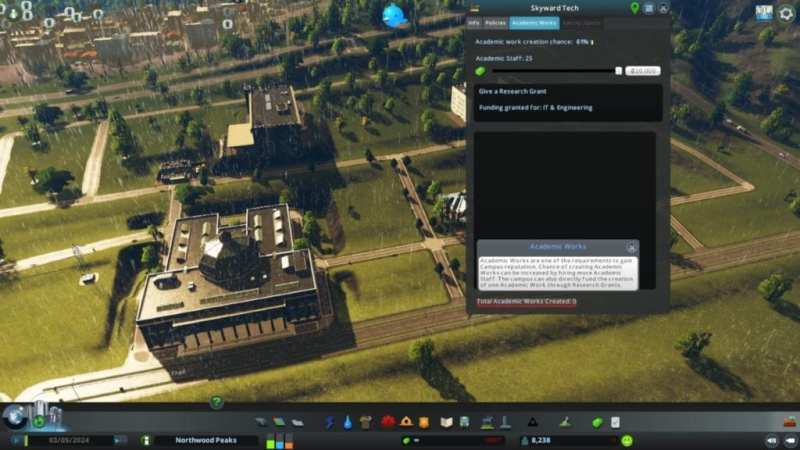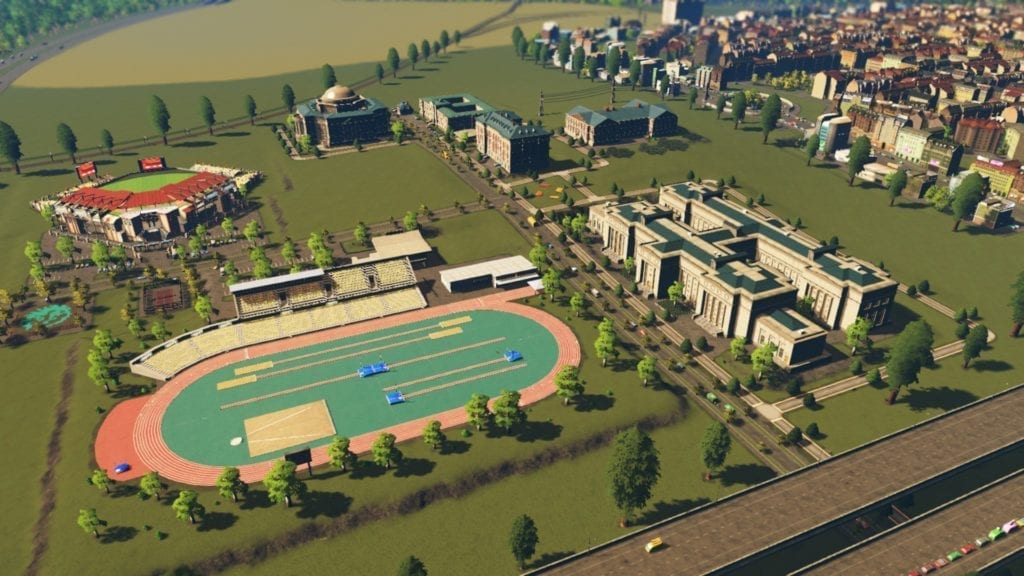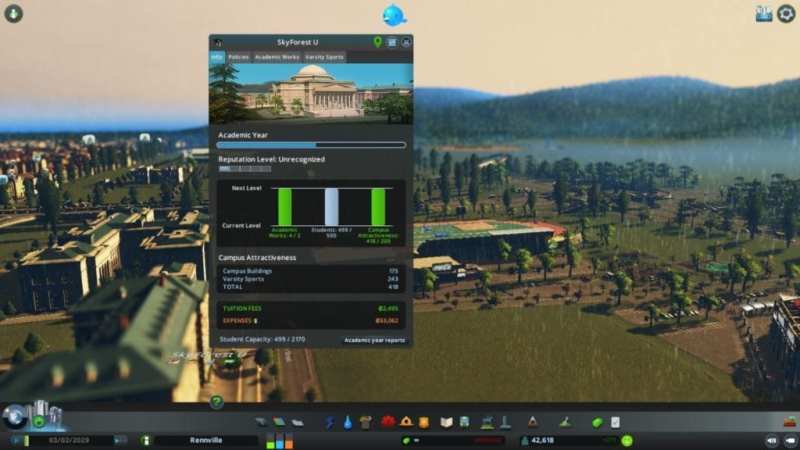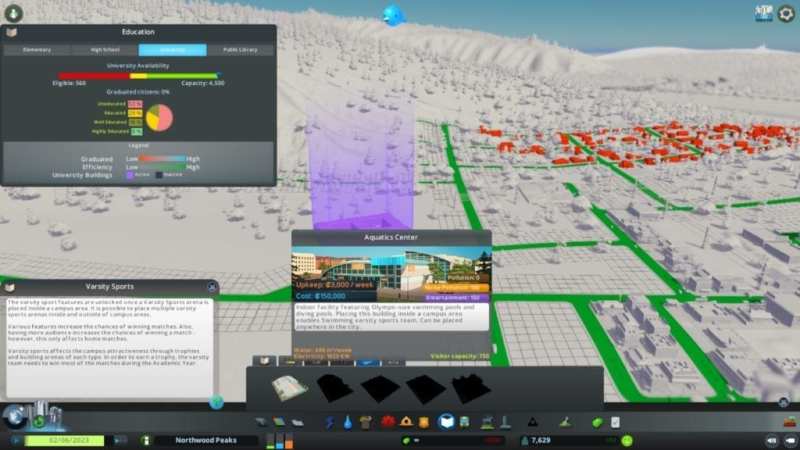Ah, school days. Some say they’re the “best years of life.” I graduated high school almost exactly four years ago and haven’t gone to college. However, I have a vague idea of how college life works. But even if you’ve been into college/university, do you know of all the logistics that go into running a campus? Unsurprisingly, that’s exactly what the new Cities: Skylines – Campus expansion seeks to show.
Living up to its name, the Campus expansion puts you in charge of building new campus areas for three different types of schools: university, trade schools, and/or liberal arts. You can run one at a time or even have all three within the same map. Regardless of what you choose, they all function fundamentally the same way. Your main goal is to expand the campuses by improving your institution’s reputation. The rep is identified with five ascending titles: Unrecognized, Recognized, Acclaimed, Renowned, and Prestigious. As your campus’s rep level hits new titles, more buildings will be unlocked, thus allowing for further growth.

Just like how you need to grow your city, the Campus DLC is all about growing the popularity and size of your institution.
Education expansion
Advancing campus rep is done by means of continuously increasing three main stats: campus attraction, academic works, and student population. Campus attraction is increased by placing more functional buildings on your campus such as study halls, student clubs, and schools dedicated to specific studies (like a law school). These facilities also boost services around your city. Academic works are obtained by offering your campus research grants for specific fields like IT & Engineering and Hospitality. These cost money and are carried out throughout the academic year.
The academic year is the period in which advancement or regression in your school is made. If your campus is performing well, it will increase in rep level by the end of the academic year, and if the goals aren’t met, it will lose its current title. Thus, keeping student population high is really the hardest thing, as that is determined not by just how well the school is doing, but also the health of your city.
Keep in mind that campuses exist in specific districts that are still connected to your main city. Not only does your city need to have a population of at least 7,000 before a university can be placed on the map, but it needs to be consistently growing so that the number of eligible members of the population will constantly be fresh. This will create a steady flow of new students. Once they’ve completed their studies, they can then go back out into the working world and help expand your city’s workforce. Thus, if your city isn’t growing, your campus won’t either.
I experienced this first-hand when I tried to build a new city from scratch using one of the five new maps that come with this expansion. My city had hit a particularly bad slump just after I crossed the 7,000 population line, which led to my campus’s growth completely plateauing. After downloading a save file of a 30K city from the Steam Workshop, I was then able to build a far healthier campus. So, do consistently keep this in mind: In Cities: Skylines – Campus, your city’s growth and your campus’s growth go hand in hand. That’s why placing public libraries (another new building) around your city is also important to helping campus growth, as it helps increase the level of education of your city’s citizens.
Campuses still need to be taken care of just like other districts with services like electricity, water, health care, police, and fire. So, having them connected to the main infrastructure is important. Bus lines also play a part in ensuring steady movement to and from the main campus (though there are also dorm buildings available for students to live on campus). As an added bonus that came in the form of an update, you can now select the classic yellow school buses to make the campus runs. Sure, yellow school buses are typically for young kids, but who cares?
Designing your campus to be aesthetically pleasing is a joy within itself. There are new footpaths and a few decorative areas to customize the area with. Campus buildings can be connected to just the footpaths, though some still require to be next to a roadside, like stadiums. Speaking of which…
Being a good sport
Another feature of Cities: Skylines – Campus is varsity sports. This is handled by means of constructing stadiums for specific sports, such as Track and Field, and American Football. While stadiums can be constructed anywhere in your city, they do not directly benefit your institution unless they’re built within the campus’s district. Once they’re connected to a school, they’ll increase campus attractiveness when your school’s home team wins matches and brings in trophies. You can set ticket prices, hire coaching staff, and even create the colors of the team jersey and select a mascot.
There are various new city/campus policies that are tied to this education expansion, which affect the behavior of the populace of your campus and city. For instance, you can boost education, eliminate collecting an income of school fees, and give students free healthcare and free lunch, just to name a few.
The new Cities: Skylines – Campus expansion doesn’t switch up the gameplay of Cities dramatically, but it does add a relatively deep new layer of engagement. While it does require you to partition off a decent parcel of land in order to have space to build a proper campus, the payoff comes in when you see your school flourishing, which in turn helps out the business sectors of your city. This isn’t an absolute must-have pack by any means, but if you’re looking for something that will bring new life to an existing city, or want the challenge of building a city for the sole purpose of supporting a campus, then this expansion is worth looking into.









Published: Jun 1, 2019 12:00 pm